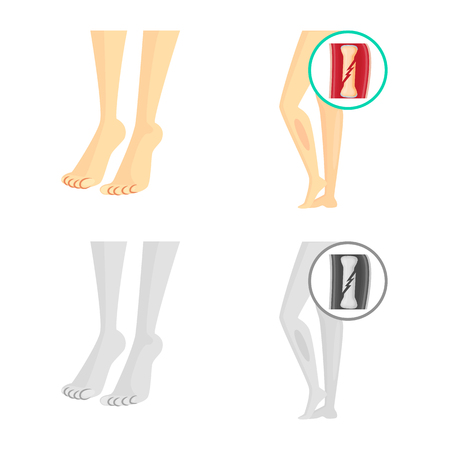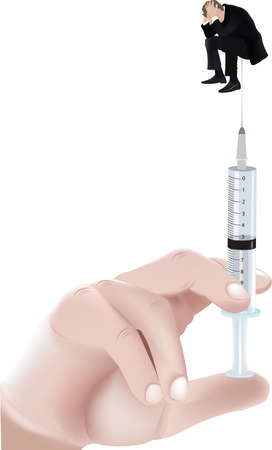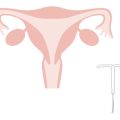Introduction: The Evolving Face of Facial Rejuvenation in the UK
The pursuit of a youthful appearance has become increasingly prominent in the UK, with more individuals seeking subtle yet effective ways to refresh their looks. In recent years, the landscape of facial rejuvenation has witnessed a notable shift, as both non-surgical and surgical options gain traction among those eager to address the signs of ageing. Two of the most talked-about procedures—thread lifts and traditional facelifts—are at the forefront of this transformation, each offering distinct benefits and considerations. Thread lifts, often referred to as the “lunchtime lift,” use dissolvable sutures to subtly lift sagging skin, providing immediate but modest results with minimal downtime. Traditional facelifts, on the other hand, remain the gold standard for dramatic and long-lasting rejuvenation, involving surgical intervention to reposition underlying tissues and tighten skin. As cosmetic trends in the UK evolve toward natural-looking enhancements and less invasive treatments, understanding how these two approaches compare in terms of cost, recovery, and results is essential for anyone considering facial rejuvenation.
Cost Comparison: What Brits Can Expect to Pay
When weighing up thread lifts versus traditional facelifts in the UK, cost remains a major factor for most patients. British clinics typically price these treatments differently based on procedure complexity, practitioner expertise, and geographical location. Below is a detailed overview of the average costs you can expect across the country.
Typical Price Ranges in the UK
| Treatment Type | Average Cost (London) | Average Cost (Rest of UK) |
|---|---|---|
| Thread Lift | £1,500–£3,000 | £1,000–£2,500 |
| Traditional Facelift | £7,000–£12,000 | £6,000–£10,000 |
Key Factors Affecting Costs in British Clinics
- Location: Procedures in London and other major cities tend to command higher prices than those offered in smaller towns or regions due to increased demand and clinic overheads.
- Practioner Expertise: Surgeons and aesthetic doctors with advanced credentials or special recognition often charge a premium for their services.
- Treatment Complexity: More comprehensive facelifts or combination procedures drive up the overall cost compared to targeted thread lifts.
- Facility Standards: Reputable clinics accredited by regulatory bodies such as the CQC (Care Quality Commission) may charge more but offer additional peace of mind regarding safety and care standards.
- Aftercare Inclusions: Some clinics bundle post-procedure follow-ups or recovery support within the quoted price, while others bill these services separately.
Takeaway for UK Patients
The decision between a thread lift and a traditional facelift hinges not just on results and recovery but also on what fits your budget. Thread lifts are considerably less expensive upfront and can be ideal for those seeking subtle rejuvenation without significant financial outlay. However, if long-term results are your priority and budget allows, investing in a traditional facelift might deliver greater value over time. Always consult with a GMC-registered specialist to ensure transparent pricing tailored to your needs and location.

3. Recovery and Downtime: Planning Around the British Lifestyle
When considering any cosmetic procedure, understanding the expected recovery period and how it aligns with everyday life is crucial. In the UK, where work-life balance and NHS guidance are both valued, the differences in downtime between thread lifts and traditional facelifts can significantly influence patient choices.
Thread Lift Recovery: Minimal Disruption for Busy Britons
Thread lifts are renowned for their minimal recovery time, often referred to as a “lunchtime procedure.” Most individuals can return to work within one or two days, which is particularly appealing given the UK’s emphasis on minimising workplace absence. Mild swelling or bruising may occur, but these side effects generally resolve quickly. The aftercare is straightforward—patients are typically advised to avoid strenuous activity, excessive facial movement, and certain skincare products for about a week. This short downtime suits professionals juggling demanding schedules or parents managing family commitments without significant disruption.
Traditional Facelift Recovery: A Consideration for Extended Leave
In contrast, traditional facelifts involve more extensive surgery and thus a longer recovery period. Patients commonly require two to three weeks off work, and full results may take several months to become apparent. Swelling, bruising, and discomfort are more pronounced, requiring stricter aftercare such as wound management and follow-up appointments. In Britain, where statutory sick pay policies may limit paid time off and GP notes are needed for medical leave, this extended downtime can be a major consideration—especially for those in public-facing roles or with limited annual leave entitlement.
Social Life and Public Perception in the UK
British social culture often prizes subtlety over dramatic change. Thread lifts offer discreet enhancement with little visible evidence post-procedure, making it easier to maintain privacy around cosmetic treatments. Traditional facelifts, due to longer visible healing signs, might attract more attention—something many in the UK prefer to avoid.
NHS Perspective and Aftercare Support
The NHS does not typically cover cosmetic procedures unless medically necessary, meaning aftercare for both thread lifts and facelifts is usually privately managed. However, complications requiring medical attention may still fall under NHS care. Patients are encouraged to choose reputable clinics that provide robust aftercare packages—a growing trend among UK providers responding to patient demand for comprehensive support during recovery.
Ultimately, when planning around the British lifestyle—balancing professional obligations, social considerations, and healthcare expectations—the streamlined recovery of thread lifts often aligns more closely with modern UK priorities compared to traditional facelifts.
4. Results and Expectations: Aesthetics and Longevity Tailored to UK Patients
When evaluating thread lifts versus traditional facelifts in the UK, understanding the anticipated results is crucial for patients seeking optimal outcomes. Both procedures offer distinct aesthetic benefits, yet their effectiveness and suitability can vary significantly based on individual needs, age, and skin characteristics prevalent among British patients.
Natural Appearance and Patient Satisfaction
Thread lifts are well-regarded for delivering subtle, natural-looking enhancements. This minimally invasive approach appeals to those desiring a refreshed look without dramatic changes—an aesthetic frequently preferred by UK patients who favour understated elegance over overt alterations. In contrast, traditional facelifts can achieve more pronounced lifting and tightening, effectively addressing deeper lines and significant sagging. This makes them suitable for individuals with advanced signs of ageing or those seeking transformative results.
Durability: How Long Do Results Last?
| Treatment | Expected Longevity | Maintenance Needs |
|---|---|---|
| Thread Lift | 12–24 months | Occasional touch-ups recommended |
| Traditional Facelift | 7–10 years (sometimes longer) | Minimal; rarely requires early revision |
Thread lifts typically provide temporary improvements lasting one to two years, after which re-treatment may be required. Conversely, surgical facelifts deliver enduring effects that can persist up to a decade or more, making them a compelling choice for those seeking longevity.
Diversity in British Skin Types and Age Groups
The multicultural landscape of the UK means practitioners must accommodate a wide spectrum of skin types—from fair and sensitive complexions to darker tones prone to hyperpigmentation or scarring. Thread lifts pose minimal risk of pigmentation issues or hypertrophic scarring, making them an attractive option for younger patients or those with higher melanin levels. Traditional facelifts, while safe when performed by experienced surgeons, carry slightly higher risks related to healing in diverse skin types but remain effective across all demographics when tailored appropriately.
Suitability by Age Group
| Age Range | Recommended Treatment | Key Considerations |
|---|---|---|
| 30s–40s | Thread Lift | Mild sagging, subtle rejuvenation desired, minimal downtime preferred |
| 50s–60s+ | Traditional Facelift | Moderate to severe sagging, long-term correction sought, willing to undergo surgery and recovery period |
Summary: UK patients have access to both thread lifts and traditional facelifts tailored to their unique aesthetic goals and biological diversity. The best choice ultimately depends on expectations regarding naturalness, durability of results, skin type considerations, and personal lifestyle priorities.
5. Risks, Safety, and Regulation in the UK
Understanding Procedural Risks
Both thread lifts and traditional facelifts come with inherent risks, though their nature and frequency differ significantly. Thread lifts, as minimally invasive procedures, typically carry lower immediate risks such as mild bruising, swelling, and minor infection. Rare complications can include asymmetry or thread migration. In contrast, traditional facelifts—being surgical interventions—are associated with more substantial risks including scarring, nerve injury, haematoma, and prolonged recovery periods. The likelihood of serious adverse effects is comparatively higher with surgical facelifts due to the complexity and invasiveness of the operation.
Safety Profiles: Minimally Invasive vs Surgical Approaches
The safety profiles of these procedures reflect their degree of invasiveness. Thread lifts are favoured for their quick recovery and reduced downtime, making them appealing for individuals seeking subtle enhancements without significant interruption to daily life. However, outcomes are often less dramatic and may not last as long as those achieved by surgical means. Facelifts offer more comprehensive and longer-lasting results but require anaesthesia, a controlled medical setting, and post-operative care to mitigate risks. Patient selection and practitioner experience are crucial factors influencing overall safety in both methods.
Regulatory Oversight in the UK Aesthetic Industry
The regulatory landscape in the UK has evolved considerably in response to the growing popularity of aesthetic treatments. The Care Quality Commission (CQC) oversees clinics offering surgical procedures such as facelifts to ensure compliance with strict safety standards. Surgeons performing facelifts must be registered with the General Medical Council (GMC) and ideally affiliated with professional bodies like BAAPS or BAPRAS. For thread lifts, regulation is less stringent; however, reputable practitioners should be trained in aesthetic medicine and work within CQC-registered facilities when offering medical-grade treatments. The Joint Council for Cosmetic Practitioners (JCCP) also provides voluntary registers to encourage best practice across non-surgical interventions.
Consumer Considerations
With a variety of providers entering the UK aesthetics market, patients are encouraged to verify practitioner credentials, clinic accreditations, and adherence to national guidelines before undergoing any cosmetic procedure. While both thread lifts and traditional facelifts can deliver satisfactory results when performed safely, understanding the specific risks and regulatory protections unique to each option is essential for informed decision-making.
6. Making the Choice: What to Consider as a UK Patient
When deciding between thread lifts and traditional facelifts in the UK, patients face a variety of factors that extend beyond just cost and results. The British healthcare landscape, access to qualified practitioners, and shifting local perceptions all play a role in shaping the right choice for each individual.
Access to Specialists Across the UK
In the UK, finding an experienced specialist is paramount. Thread lifts are often performed by aesthetic doctors or cosmetic surgeons operating within private clinics, particularly in larger cities such as London, Manchester, and Birmingham. Traditional facelifts, on the other hand, require a consultant plastic surgeon—typically found in both private hospitals and some NHS trusts offering reconstructive procedures. Prospective patients should thoroughly vet credentials and ensure practitioners are registered with organisations like the GMC (General Medical Council) or BAAPS (British Association of Aesthetic Plastic Surgeons).
NHS Versus Private Healthcare Pathways
It’s important to note that cosmetic procedures—including both thread lifts and surgical facelifts—are rarely available on the NHS unless there is a compelling medical need (such as reconstruction after trauma). Most patients will pursue these treatments privately, which influences both accessibility and price. Private clinics may offer more flexibility in scheduling, but costs will be entirely self-funded. Patients should also consider aftercare provisions and whether emergency support is readily available if needed post-procedure.
Evolving Attitudes Towards Cosmetic Interventions
The British public’s view on cosmetic treatments has shifted considerably over recent years. There is growing acceptance of minimally invasive options like thread lifts due to their subtlety and lower downtime—qualities that align with typically understated British tastes. However, there remains a degree of stigma attached to more dramatic surgical alterations, especially among older generations. Social attitudes can affect how comfortable patients feel discussing their choices with friends, family, or colleagues.
Key Factors to Weigh
- Desired Results: Thread lifts offer subtle lifting; facelifts deliver more pronounced changes.
- Recovery Time: Consider work commitments and personal circumstances; thread lifts usually mean less time off.
- Budget: Weigh up initial costs against longevity of results; facelifts have a higher upfront cost but longer-lasting outcomes.
- Risk Tolerance: Surgical facelifts carry greater risks but are well-established; thread lifts have fewer complications but also shorter-lived effects.
Final Thought for UK Patients
Your decision should reflect your personal goals, lifestyle needs, and comfort with both the procedure and its social reception. Consulting with reputable UK-based specialists—and considering your own values within the context of British culture—will help ensure you make an informed, confident choice between thread lifts and traditional facelifts.


